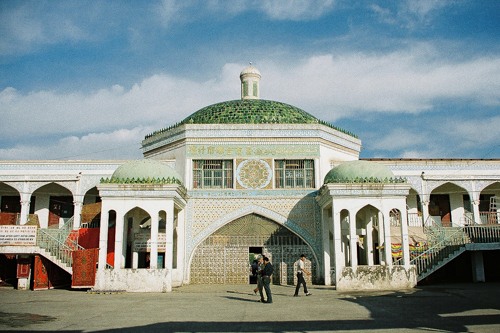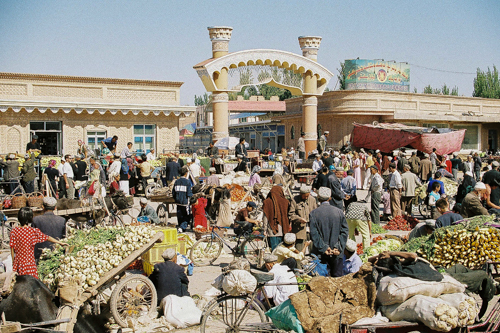
I traveled around the Xinjiang Uyghur Autonomous Region, China, in 2005, longing to track down some signs of the ancient Silk Road. And it was in the bazaars, or local markets, where I could still feel the vibe of the Silk Road.
One of the merchants I met in the bazaar, who was from Pakistan and spent time traveling around the region to trade things, shared his tales of how he makes a living by lots of quality products to meet people’s needs, and how much fun he finds the job. He travels as if there are no borders between countries. It was clear from his appearance that he was a passionate and energetic merchant.
The lively vibe and spirit at these markets will leave you feeling that the Silk Road isn’t just something from history but is still very much alive and flourishing today. Here is a selection of snapshots from those bazaars in the Silk Road towns.
The best bazaars in Kashgar and Yarkant
Traveling through the region, I went to the bazaar in all the towns I visited. These are the best places to dive into the locals’ daily life – you can even get a haircut, have your home devices repaired, and fix your donkey’s hooves.
While all the bazaars were full of fun, discovery, and surprise, the best ones were in Kashgar and Yarkant. These were huge, with thousands of products and services being traded. It was even busier on a Sunday in Kashgar, and also Saturday and Sunday in Yarkant. I could easily spend a whole day there at those times.
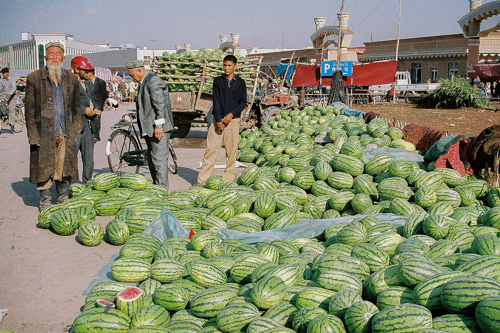
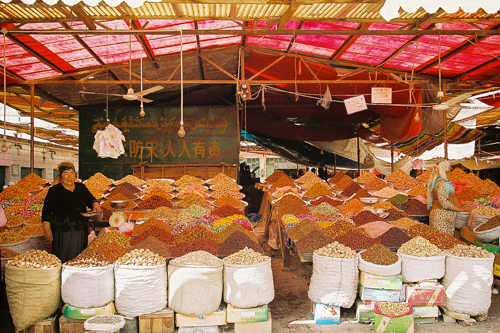
The corners for fresh vegetables, fruits, and meat are filled with the bustle of negotiation between merchants and local shoppers
At the bazaars in the big cities, you’ll see people from the various ethnic groups, including Uyghurs, Hui, Tajiks, Uzbeks, Kazakh, and Kyrgyz, all coming together to trade their products.
These include not only fresh vegetables, fruits, and meats, but also essentials such as cloth and livestock. The section for fresh foods is busy from early morning.
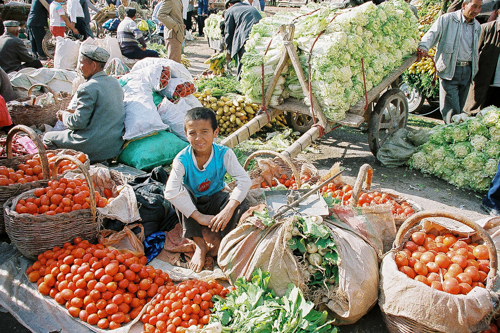
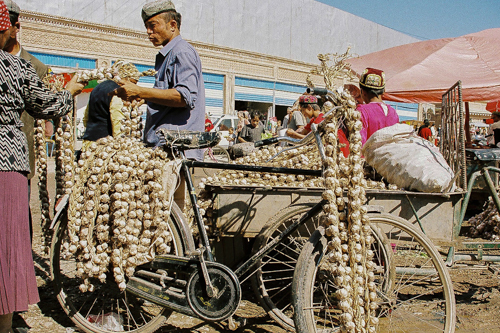
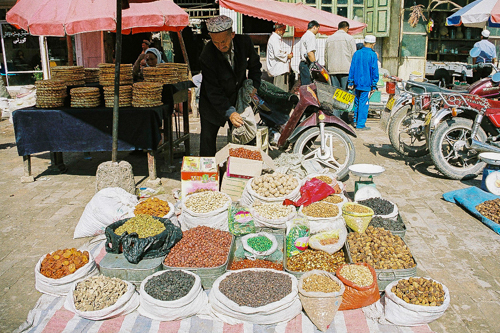
Here, a clever boy was keeping a tight hold on the reins of the donkey while his father was busy with a shopper. The donkey looked as though he was smiling, as if he understood the situation and was enjoying some time with the boy 🙂
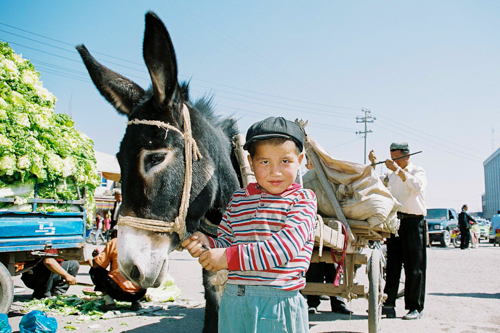
A Uyghur merchant and a local lady bargain for fruit.
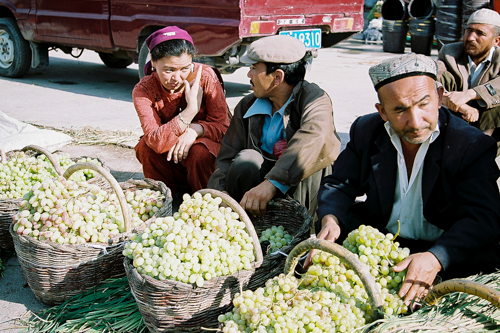
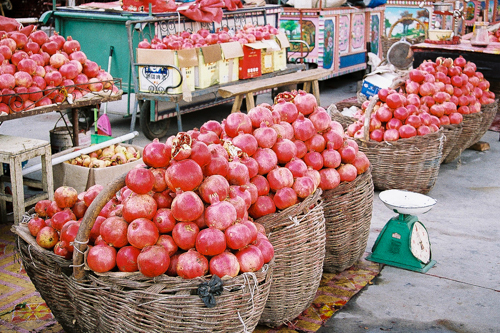
This butcher’s stall was busy selling fresh lamb as well as preparing the local stuffed bread specialty, known as samsa.
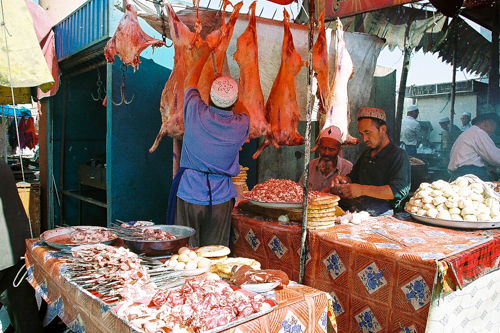
Nothing was wasted from any animal. The bones were prepared ready to be used in great soups and broths for the local dishes.
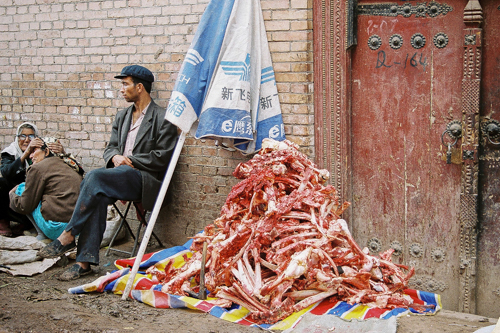
Weekend livestock market
You will usually only see the livestock market on a weekend. It’s easy to find as it’s normally right at the edge of the bazaar, crowded with livestock in rows, and smelly to boot! The key types of livestock brought in for trading are chickens, ducks, sheep, cattle, donkeys, goats, and horses, plus pets such as puppies and kittens.
There seemed to be harder negotiations going on in the corner – louder voices and lots of stronger, more exaggerated gestures.
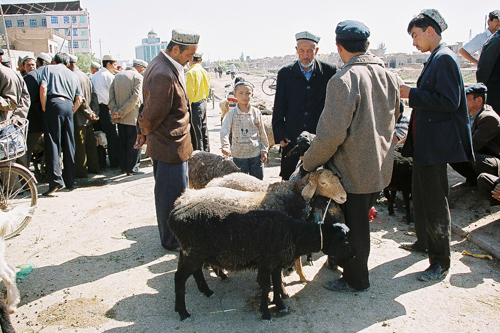
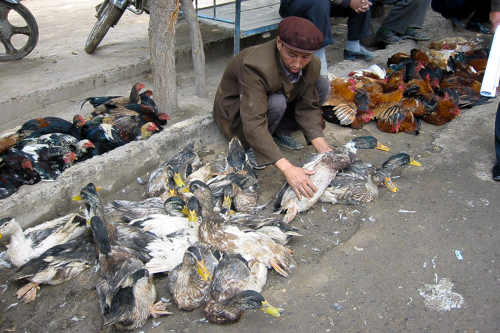
There were also puppies and kittens for sale, with lots of cute yelp-yelp and mew-mew noises! The people here seemed to be using kinder, softer voices.
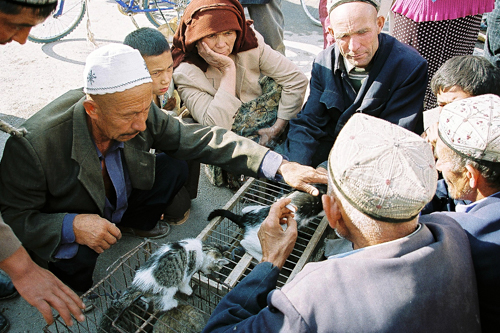
A newly purchased chicken on the way to its new home.
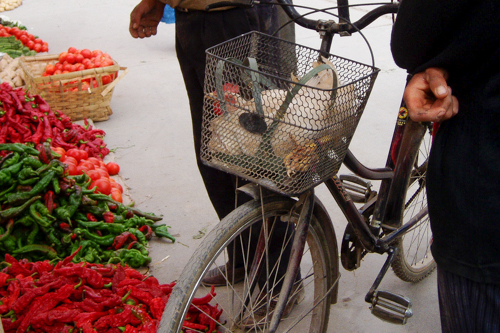
… and for curious tourists, there was even more!
This is an area that curious tourists will find super interesting! This picture shows many types of dried snakes that seemed to be for use in local medical practice. Noticing how each pot contains products of the same size, I guessed these were farmed snakes!
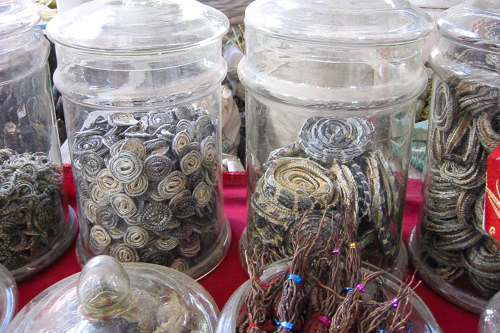
There was also a huge crowd of men, and only men, who were all keenly staring at something. Naturally, as a curious tourist, I made my way through to the front row and found a stall selling …
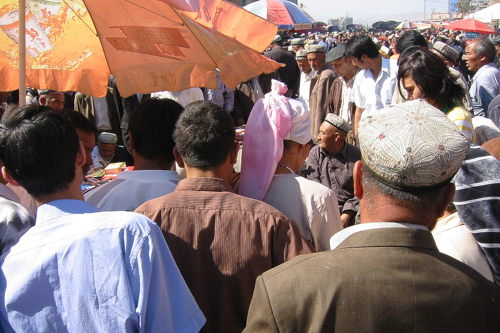
Live scorpions! I didn’t understand the language, but the merchant kept talking about the efficacy (apparently it works like Viagra) while busily extracting juice from them at the same time. When he noticed me, he scolded me, telling me to go away and that it wasn’t a stall for a young woman like me!
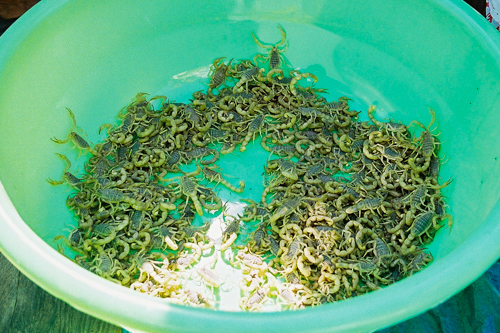
Food stalls – Preparing foods for thousands of merchants and shoppers all day
The food stalls work to sustain the merchants’ and shoppers’ energy levels all day long. Tourists can also enjoy local cuisine such as laghmen, kebabs, or lamb pilaf, the ingredients for which come straight from the bazaar.
You’ll also find local foods that you wouldn’t be able to order at a restaurant. Here is a stew made using sheep’s innards.
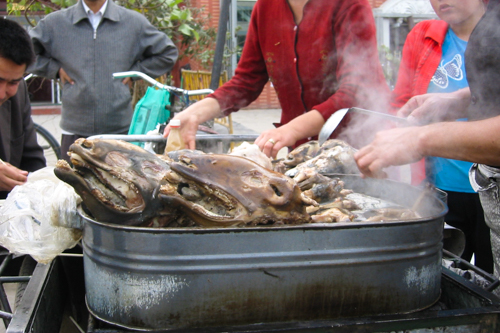
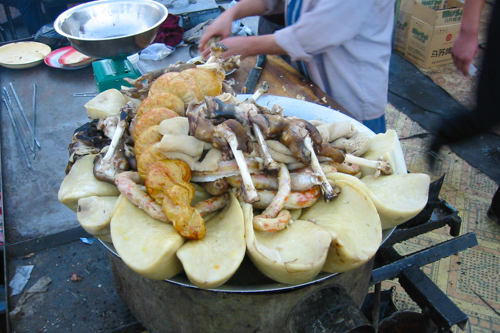
Working in the dry and hot weather, it’s essential to stay hydrated. People come and buy a juicy piece of vegetable or fruit for a brief break. There are many stalls selling watermelon, cucumber, and so on.
This one sold steamed pumpkin and was extremely popular – every piece of pumpkin was sold as soon as it was put on the plate. I queued up to try a piece and found it extremely juicy and sweet.
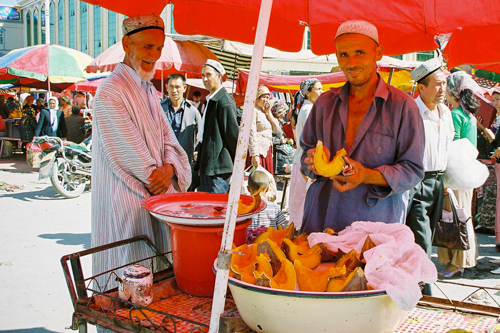
I never knew how delicious fig is until my trip to Xinjiang. It’s sweet, a little sour, and extremely juicy. There are always people surrounding the baskets at the fig stalls, carefully choosing good ones and tasting them on the spot.
When I felt thirsty at the bazaar, I joined in and enjoyed some fresh, sweet, and juicy figs.
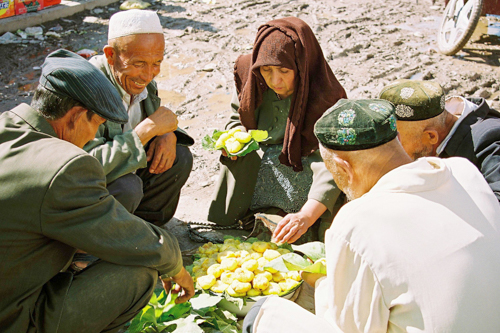
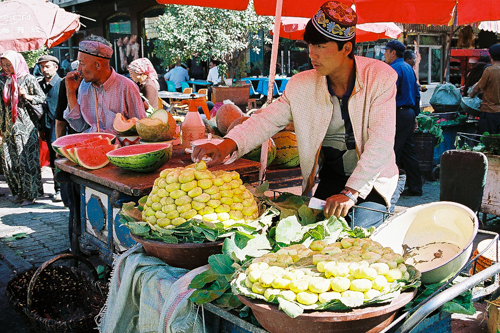
It’s not only goods that are traded – there are also services to support the merchants and local people
These gentlemen have come to the barber for a shave. They order the exact shape of beard they want. One man, after having his shave, asked me to take his photo so he could check that his new beard was just right.
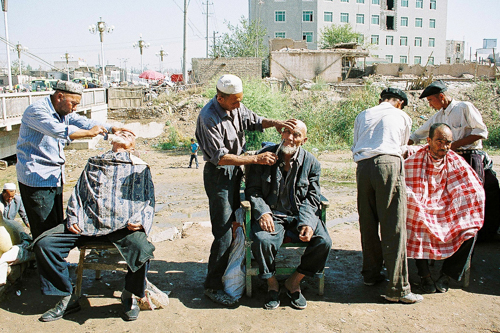
The livestock working for merchants also need looking after – this donkey is having new shoes fitted to his hooves.
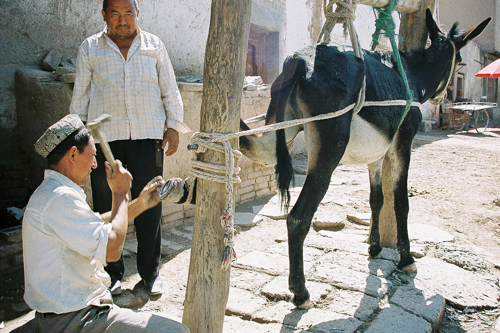
Clothes and daily essentials
Some scenes are indeed reminiscent of the Silk Road days. Women crowd around in the fabric market and are active as both sellers and buyers. Buyers have a sharp eye for quality, so the sellers are continually opening up all the different types of cloth until the buyers find what they want.
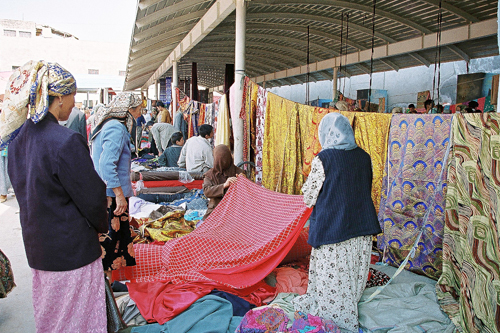
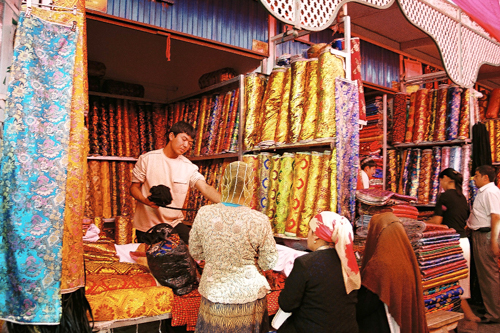
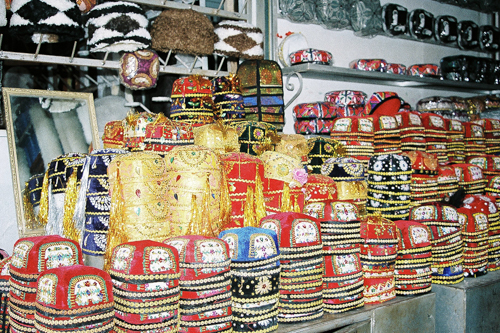
This DIY shop sells all different kinds of tools.
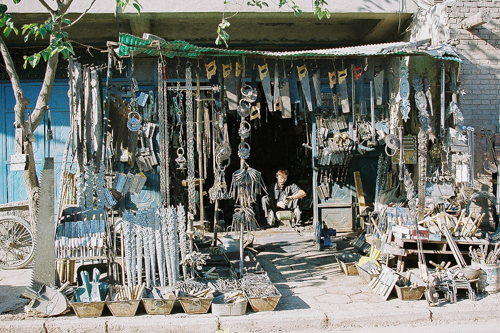
The photos from the bazaars in Xinjiang could go on and on. I hope this post inspires you to travel to Xinjiang, where you can experience the vibes of a Silk Road bazaar for yourself.
